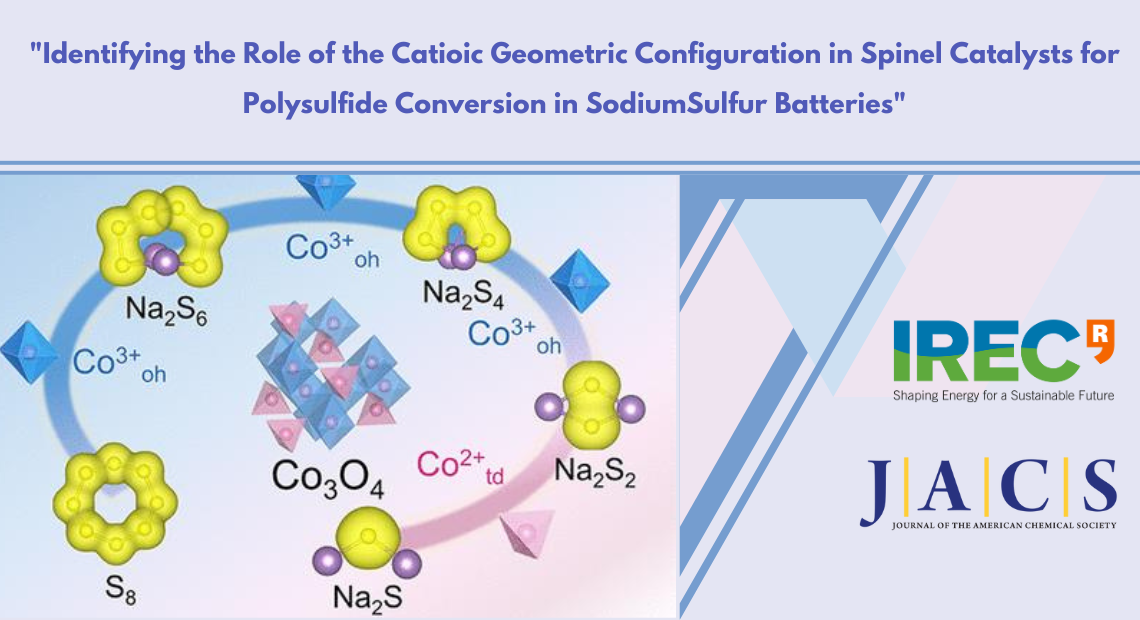The researchers from the Functional Nanomaterials group at the Catalonia Institute for Energy Research (IREC) have shed light on the intricate workings of spinel catalysts, particularly their role in polysulfide conversion within sodium-sulphur batteries. This research, co-led by ICREA Prof. Andreu Cabot, head of the Functional Nanomaterials group, offers profound insights into the potential of these catalysts, which have long been a topic of intrigue in the scientific community.
In the recently published study, “Identifying the Role of the Cationic Geometric Configuration in Spinel Catalysts for Polysulfide Conversion in Sodium-Sulfur Batteries“, showcased in the esteemed Journal of the American Chemical Society, IREC researchers provide insights into the AB2X4 spinel structure. This structure, with its distinct tetrahedral A and octahedral B sites, plays a significant role in various technological applications, notably in battery polysulfide conversion. However, the exact processes by which these spinel catalysts assist in this conversion have been less understood.
To gain a clearer understanding, the researchers adjusted the Co3O4 catalyst. In other words, they substituted specific components (Cotd2+ and Cooh3+) primarily with Fetd2+ and Feoh3+, resulting in the emergence of new materials: FeCo2O4 and CoFe2O4. Through their comprehensive study, it was discerned that Cooh3+ is essential in breaking certain chemical connections (S–S bonds), while Cotd2+ is vital for establishing new ones (S–Na bonds). These discoveries not only shed light on the relationship between the catalyst’s role and its structural design but also point towards potential advancements in catalyst development. To put it more simply, the researchers changed some pieces, leading to a slightly different structure. By doing so, they were able to understand which pieces (or components) were responsible for specific actions in the battery’s operation. This knowledge is crucial as it can guide future efforts to design even better batteries.
This study is significant because the implications of this research are vast, spanning sectors from renewable energy to industrial applications. By enhancing our understanding of these catalysts, we can harness their potential more effectively, leading to more efficient energy storage solutions. This could revolutionise industries, making processes more sustainable and cost-effective, ultimately benefiting society.
This groundbreaking research was a collaborative effort, with invaluable contributions from researchers at the Catalonia Institute for Energy Research (IREC), Catalan Institute of Nanoscience and Nanotechnology (ICN2), Lanzhou University, Institut de Ciència de Materials de Barcelona (ICMAB-CSIC), and Nanjing Tech University. Their collective expertise and dedication have been instrumental in this pioneering study, conducted within IREC.
For a more in-depth exploration of this research, please refer to the original article in the Journal of the American Chemical Society and the supporting information available at this link.
The supporting Information is available free of charge at this link.



